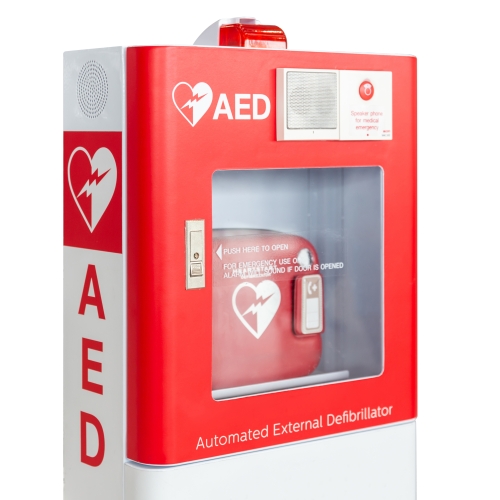
An Automated External Defibrillator (AED) analyzes the heart's rhythm and, if necessary, delivers an electrical shock, or defibrillation, to help the heart re-establish an effective rhythm. The ideal situation is to have an Automated External Defibrillator (AED) located close enough to every after-school practice and event so that it can be used within three minutes of a life-threatening emergency. Sudden Cardiac Arrest survival rates decrease by 10% with each minute of delay.
In addition to sharing AED locations during training sessions, you should also let your local Emergency Medical Systems (EMS) office know where AEDs are located. This will help emergency personnel know in advance when they respond to an emergency at your school.
Keep Your AEDs Maintained
What to Do After an AED is Used
If your school needs additional AEDs to meet the three-minute goal throughout your campus, contact your district’s Health and Safety Coordinator or designee to investigate funding options. Grants may be available.
